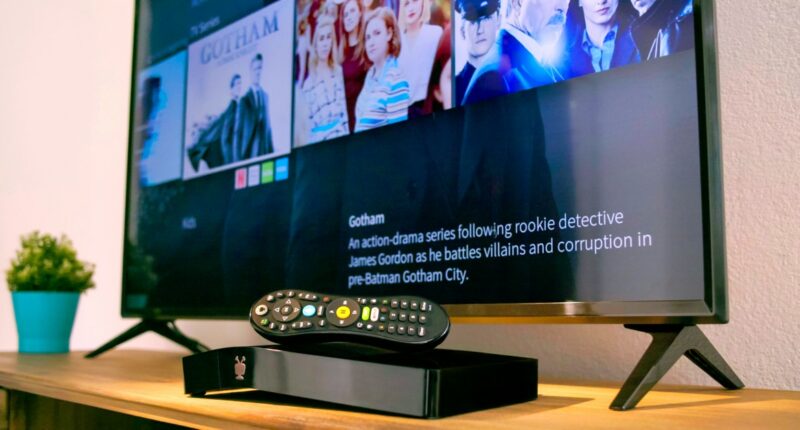Share this @internewscast.com
In the early 2000s, TiVo was not just a company; it was a phenomenon. Much like Google and Xerox, TiVo’s influence was so profound that its brand became a verb. People would often say they needed to “TiVo” the latest episode of their favorite show or a crucial game, underscoring the company’s impact on how we consumed television. While TiVo didn’t invent the digital video recorder (DVR), it certainly revolutionized it, introducing features that allowed viewers to pause live TV, rewind, and record one show while watching another—capabilities we now take for granted.
These groundbreaking features were encapsulated in the renowned U.S. Patent 6,233,389, famously dubbed the Time Warp patent. Throughout the 2000s and into the early 2010s, TiVo found itself embroiled in legal battles to protect this intellectual property. The most notable of these was a drawn-out legal conflict with EchoStar, initiated by TiVo in January 2004, which culminated in a significant $500 million settlement in April 2011.
During its zenith, TiVo was frequently in court, defending its patents against major industry players like Motorola, Time Warner Cable, AT&T, Dish Network, Cisco, and Verizon. TiVo emerged victorious in nearly all these confrontations, with the U.S. Patent Office reaffirming the validity of its patent on two separate occasions.
However, while its focus was on courtroom victories, TiVo missed an opportunity to lead the charge in the burgeoning smart TV market.
As the 2010s approached, TiVo’s primary revenue stream shifted towards licensing its technology. Unfortunately, by this time, the industry landscape was rapidly evolving. Netflix had launched its streaming service in January 2007, soon followed by Hulu’s beta later that year and its public release in March 2008. That same year, the first Roku device hit the market, alongside the early models of modern smart TVs, such as Samsung’s PAVV Bordeaux TV 750.
Simultaneously, DVRs became a standard component in most cable TV packages. Despite TiVo’s sleek interface and advanced functionalities like remote scheduling via TiVo Central Online or transferring recordings to a computer with TiVoToGo, the marketplace was changing. By 2008, the prospect of spending over $200 for a separate TiVo DVR with HD tuners, plus an additional subscription fee, became a tough sell when cable providers like Time Warner offered DVRs that sufficed for most viewers’ needs.
Roku was offering simple-to-use streaming set-top boxes at impulse purchase prices — as low as $49.99 by 2011. Google pushed prices even lower with the Chromecast in 2013. Smart TV operating systems were becoming increasingly capable. TiVo was adding support for Netflix, Hulu, and other streaming services, but it seemed to constantly be playing catch-up as it entered the new decade.
TiVo’s hardware had stagnated. It was wasting time on features like the ability to order Domino’s from your TV. And its biggest money maker — a patent focused on manipulating broadcast television — was increasingly becoming obsolete as cord-cutting began to grow in popularity.
According to nScreenMedia traditional pay TV subscriptions peaked in the US in 2010 at around 103 million, or roughly 89 percent of households. In 2025, that number is down to just 49.6 million, or 37.6 percent of households. The most popular streaming services are now easily outpacing linear pay TV as they copy some of its moves by leaning into live content anchored by sports and other spectacles that draw eyeballs to now-unskippable ads. At the end of 2024, Netflix had 89.6 million subscribers and Disney Plus 56.8 million in the US and Canada. (The companies report subscriptions by region only, not country.) As TiVo continued to battle companies like Google and Time Warner in court, its customer base was drying up.
TiVo was eventually purchased by Rovi, a company whose primary business is hoarding patents and either licensing them to other companies or suing companies in order to force them to license their technology. This, sadly, was to be TiVo’s fate going forward. When it was purchased by tech licensing firm Xperi in 2020, the press release announcing the merger didn’t tout best-in-class hardware or innovative set-top box software. Instead, it bragged about having “one of the industry’s largest and most diverse intellectual property (IP) licensing platforms.”

After its merger with Xperi, TiVo wouldn’t launch another set-top box. Its last model, the TiVo Edge, was released in 2019. And this month, the company confirmed it had quietly sold the last of its stock on September 30th and would be exiting the hardware business.
TiVo says it plans to focus on its fledgling smart TV OS — a move that’s probably 15 years too late. Perhaps if the company had been focused on revenue sources outside the courtroom, it could have been at the forefront of the smart TV rollout. Maybe it could have developed its own streaming-first device that was more than a lazy (and late) reskin of Android TV. TiVo’s UI and iconic peanut remote were beloved. Its brand was a household name. But, rather than build a platform to power the next generation of televisions, it seemed focused on milking every dollar out of companies clearly heading towards obsolescence.








